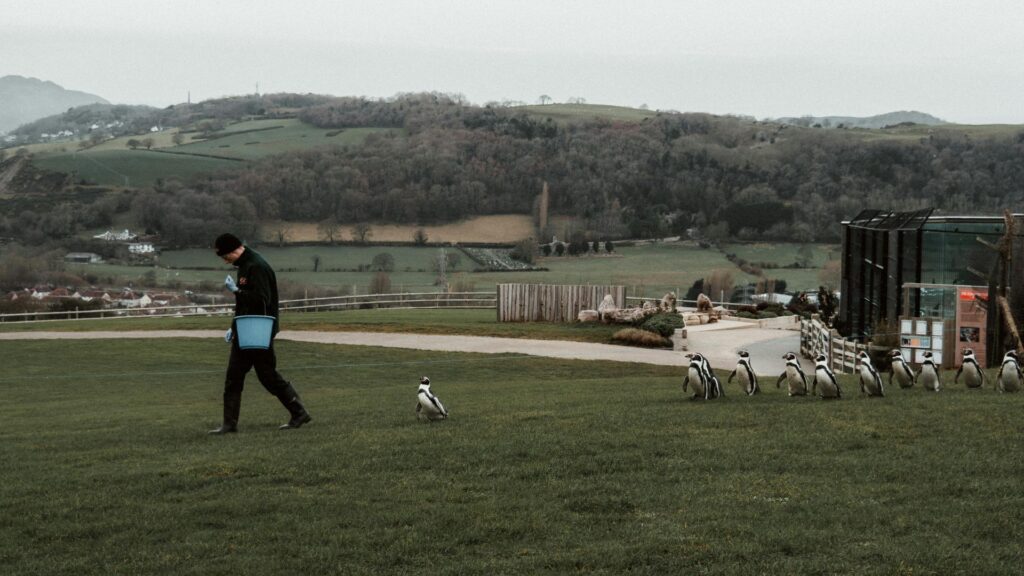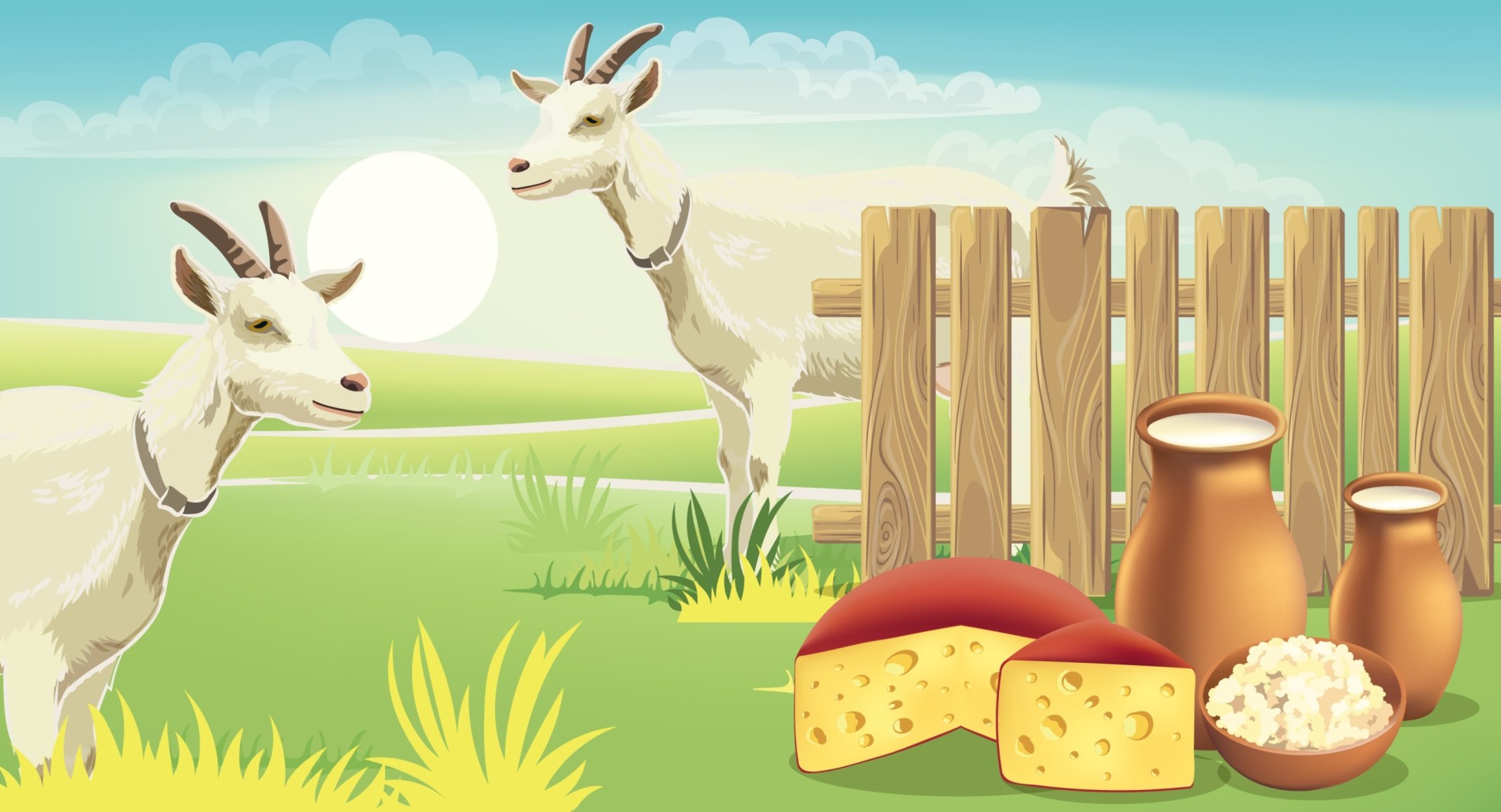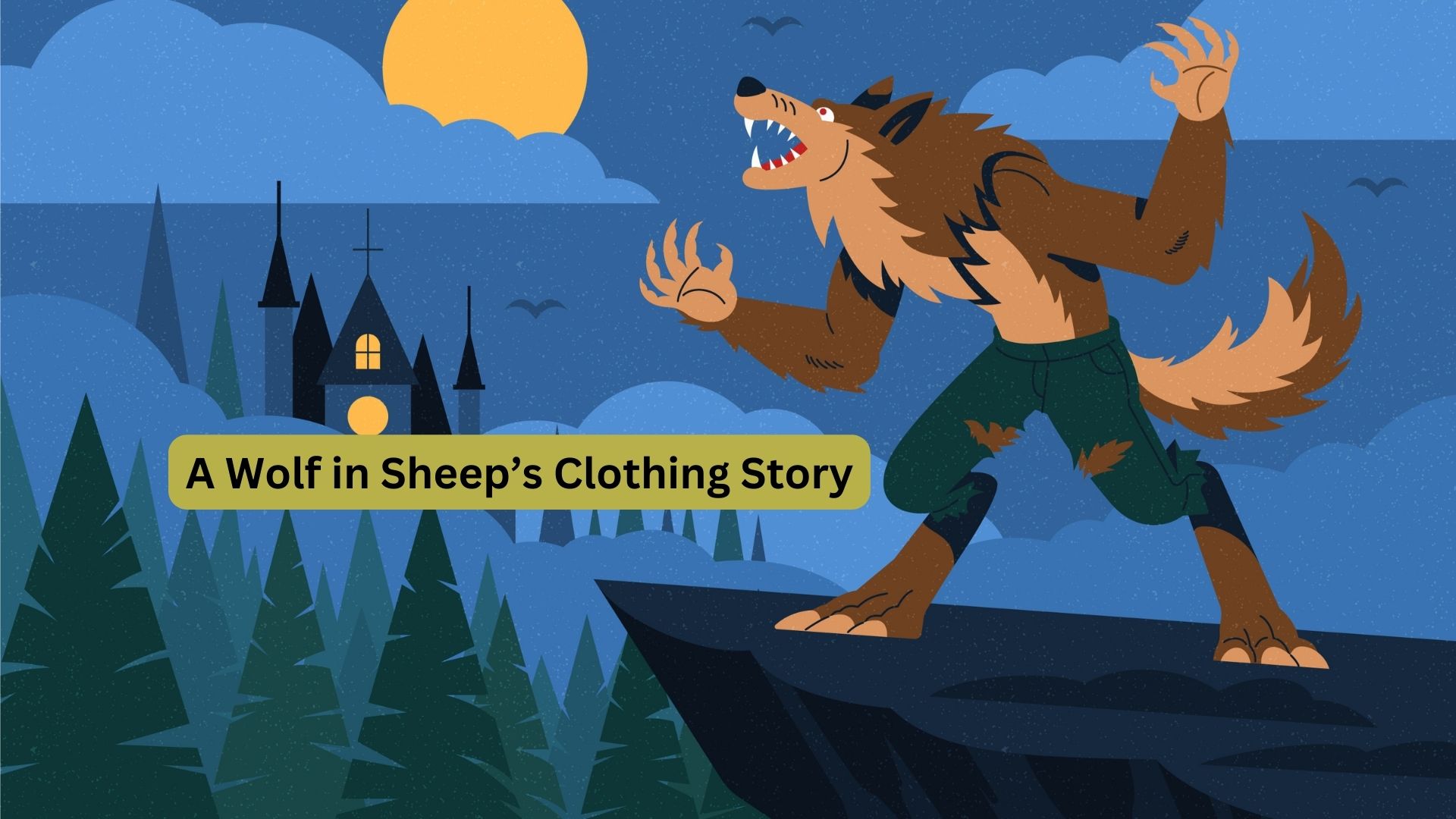The phenomenon of animals harboring animosity towards humans is a complex and deeply concerning issue that demands our attention and understanding. Over the years, human activities have led to significant alterations in the natural world, disrupting ecosystems and threatening the survival of countless species. One of the most glaring consequences of human encroachment on wildlife habitats is the loss of essential territories for animals to thrive.
As urbanization spreads and industries expand, forests are cleared, wetlands drained, and grasslands converted into agricultural fields or urban landscapes. This destruction of natural habitats forces animals into increasingly smaller and fragmented areas, leading to heightened competition for resources and heightened stress levels.
Moreover, human exploitation of wildlife through hunting, poaching, and illegal trade exacerbates the problem. Animals are targeted for their fur, tusks, horns, or exotic pets, driving many species to the brink of extinction. The relentless pursuit of profit and human greed know no bounds, leading to the exploitation and suffering of countless innocent creatures.
In addition to direct harm, humans also pose indirect threats to wildlife through pollution and environmental degradation. Industrial activities release toxic chemicals into the air, water, and soil, poisoning ecosystems and contaminating food sources. Plastic pollution chokes marine life, while oil spills devastate coastal habitats. Climate change, largely driven by human activities, further compounds these issues, altering habitats and disrupting migration patterns.
Furthermore, as human populations expand, conflicts between humans and wildlife become increasingly common. Animals labeled as pests are persecuted, leading to retaliatory killings and extermination campaigns. Encounters between humans and wildlife often result in injury or death for both parties, further fueling negative attitudes and fear.
In essence, the reasons behind animals’ resentment towards humans are multifaceted and deeply rooted in our unsustainable relationship with the natural world. If we are to address this issue effectively, we must acknowledge our role in causing harm and take decisive action to mitigate the impacts of human activities on wildlife. Only through collective effort and a commitment to conservation can we hope to foster a future where humans and animals coexist in harmony.
Why Animals Hate Humans:
This necessitates a fundamental shift in our attitudes and behaviors towards wildlife, grounded in respect, empathy, and a recognition of the intrinsic value of all living beings. It calls for a paradigm where human progress is no longer measured solely by economic growth and technological advancement but by our ability to coexist sustainably with the natural world.
Education and awareness play a crucial role in this endeavor. By fostering a deeper understanding of the interconnectedness of all life forms and the importance of biodiversity, we can inspire individuals and communities to take meaningful action in conservation efforts. This includes advocating for stronger environmental policies, supporting wildlife sanctuaries and protected areas, and adopting more sustainable lifestyles.
Additionally, fostering a sense of stewardship and responsibility towards wildlife is paramount. Encouraging responsible tourism practices that prioritize animal welfare and habitat protection can help minimize the negative impacts of human presence on fragile ecosystems. Similarly, promoting ethical wildlife viewing experiences and supporting conservation-oriented businesses can provide economic incentives for communities to protect their natural resources.
Furthermore, collaboration and cooperation between governments, conservation organizations, and local communities are essential for effective conservation strategies. By working together, we can develop comprehensive plans for habitat restoration, species recovery, and conflict resolution. This may involve implementing innovative solutions such as wildlife corridors, eco-friendly infrastructure development, and community-based conservation initiatives.
Ultimately, the task of bridging the divide between humans and animals requires a concerted effort from all sectors of society. It demands a shift in mindset from domination to coexistence, from exploitation to stewardship. By embracing this ethos and taking concrete steps towards conservation and sustainability, we can build a future where animals no longer bear resentment towards humans, but instead thrive alongside us in harmony and mutual respect.
Table of Contents About Why Animals Hate Humans
Introduction: Exploring the phenomenon of animals hating humans

The phenomenon of animals harboring animosity towards humans is a complex and often overlooked aspect of our relationship with the natural world. While humans have long viewed themselves as stewards of the Earth, our actions have frequently resulted in adverse consequences for wildlife. From habitat destruction and pollution to hunting and exploitation, human activities have imposed significant hardships on countless animal species.
This has led to a growing body of evidence suggesting that many animals perceive humans not as benevolent caretakers, but as sources of threat and disturbance. The implications of this resentment extend far beyond individual encounters, impacting ecosystems and biodiversity on a global scale. Understanding the root causes of this animosity is essential for developing effective strategies to mitigate human-animal conflict and promote coexistence.
By acknowledging and addressing the grievances of the natural world, we can work towards a more sustainable and harmonious relationship with the animals that share our planet.
Reasons for Animal Resentment Towards Humans
Animals’ resentment towards humans stems from a myriad of interconnected factors, each reflecting the profound impact of human activities on wildlife and their habitats. One primary cause is the loss of natural habitat due to human encroachment. As human populations expand, forests are cleared, wetlands drained, and grasslands converted into agricultural or urban areas, leaving animals with increasingly limited space to thrive. This habitat loss not only disrupts their homes but also fragments populations, leading to isolation and genetic bottlenecks.
Moreover, hunting and poaching activities further exacerbate animals’ animosity towards humans. Despite regulations and conservation efforts, illegal hunting for trophies, traditional medicine, or simply for sport persists, decimating populations of endangered species and disrupting ecosystems. Animals’ instinctual fear and aversion towards humans intensify as they witness their kind being ruthlessly hunted and slaughtered.
Additionally, pollution and environmental degradation pose significant threats to wildlife, contributing to their resentment towards humans. From oil spills contaminating marine habitats to air and water pollution affecting terrestrial ecosystems, human-induced pollution has far-reaching consequences for animals. Poisoned water sources, littered landscapes, and toxic chemicals disrupt animals’ health, behavior, and reproduction, fostering a deep-seated mistrust of human presence.
Furthermore, the rapid pace of urbanization and infrastructure development disrupts natural ecosystems, causing widespread disturbance to wildlife. Noise pollution from traffic, construction, and industrial activities disturbs animals’ communication, navigation, and mating rituals. Bright artificial lights disrupt nocturnal animals’ behavior and migration patterns. As humans encroach further into wild spaces, conflicts between humans and wildlife escalate, further fueling animals’ resentment towards humans.
In essence, animals’ resentment towards humans is a complex interplay of habitat loss, hunting, pollution, and disturbance caused by human activities. To address this issue, it’s imperative to recognize and mitigate the impacts of human actions on wildlife, fostering empathy, and promoting coexistence through conservation efforts, responsible stewardship of natural resources, and sustainable development practices. Only through concerted efforts to address the root causes of animal resentment can we hope to build a future where humans and wildlife thrive together in harmony.
Impact of Human Activities on Wildlife Behavior
The impact of human activities on wildlife behavior is profound and multifaceted, encompassing a wide range of detrimental effects that disrupt the delicate balance of natural ecosystems. One of the most significant consequences is the loss and fragmentation of habitat, as human development encroaches upon previously untouched wilderness areas.
This displacement forces wildlife into smaller and increasingly isolated pockets of land, limiting their access to resources and disrupting established migratory patterns. Additionally, human-induced pollution, ranging from chemical contaminants to noise pollution, further compounds the challenges faced by wildlife. Pollution not only contaminates water sources and food supplies but also disrupts communication and navigation systems crucial for animal survival.
Moreover, human activities such as hunting, poaching, and illegal wildlife trade have devastating consequences for various species, driving many to the brink of extinction. The indiscriminate harvesting of wildlife for commercial gain not only decimates populations but also disrupts social structures and genetic diversity essential for long-term survival. Furthermore, the expansion of urban areas and infrastructure projects not only destroys critical habitat but also increases the frequency of human-wildlife conflicts. Animals are forced to adapt to novel environments or risk injury and death as they navigate human-dominated landscapes.
The cumulative effect of these human-induced stressors is evident in altered wildlife behavior, characterized by increased levels of stress, aggression, and aberrant behavior. Animals may exhibit changes in feeding and mating patterns, resort to scavenging in human settlements, or become more aggressive towards humans in defense of their dwindling territories. These behavioral shifts not only pose challenges for wildlife conservation but also have implications for human safety and well-being.
Addressing the impact of human activities on wildlife behavior requires a multifaceted approach that encompasses habitat conservation, sustainable resource management, and community engagement. By implementing measures to protect and restore natural habitats, enforcing strict regulations against illegal wildlife trade, and promoting coexistence through education and awareness campaigns, we can mitigate the negative effects of human activities on wildlife behavior and foster a more harmonious relationship between humans and the natural world.
Strategies for Mitigating Human-Animal Conflict
Strategies for mitigating human-animal conflict encompass a multifaceted approach aimed at addressing the root causes of tension and promoting coexistence between these two entities. One crucial strategy involves the establishment of wildlife corridors and protected areas, which serve as vital pathways for animal movement and habitat connectivity. By preserving these natural pathways, we can minimize the fragmentation of habitats caused by human development, allowing animals to roam freely and access essential resources without encountering human barriers.
Education also plays a pivotal role in mitigating conflict, as it empowers communities to adopt practices that minimize negative interactions with wildlife. Through targeted awareness campaigns and educational initiatives, individuals can learn about the importance of coexisting with animals and the consequences of actions such as habitat destruction and poaching. By fostering a deeper understanding of the ecological significance of wildlife, communities can develop a sense of stewardship towards their natural surroundings, leading to more sustainable interactions with animal populations.
Enforcement of stricter regulations is another critical aspect of conflict mitigation, particularly concerning activities such as poaching and habitat destruction. By implementing and enforcing laws that protect wildlife and their habitats, governments can deter illegal activities and hold perpetrators accountable for their actions. Additionally, investing in research to understand the underlying drivers of conflict is essential for developing targeted interventions that address specific challenges faced by both humans and animals.
Ultimately, mitigating human-animal conflict requires a collaborative effort involving governments, communities, conservation organizations, and other stakeholders. By working together to implement proactive measures such as wildlife corridors, education campaigns, and enforcement mechanisms, we can create environments where humans and animals can coexist peacefully, ensuring the preservation of biodiversity and the well-being of both species.
Promoting Coexistence: Building Positive Relationships
Promoting coexistence between humans and wildlife is imperative for the sustainability of ecosystems and the well-being of both species. Building positive relationships requires a multifaceted approach that encompasses education, conservation efforts, and community engagement. One key aspect is encouraging responsible ecotourism practices that allow humans to appreciate and interact with wildlife in their natural habitats without causing harm or disruption.
By promoting ethical wildlife viewing guidelines and supporting local communities that rely on tourism, we can ensure that human activities contribute to conservation rather than exploitation.
Additionally, investing in conservation initiatives and wildlife rehabilitation efforts is essential for mitigating the negative impacts of human activities on animal populations. Providing support for organizations dedicated to rescuing and rehabilitating injured or orphaned animals not only helps individual creatures but also contributes to broader conservation efforts by preserving biodiversity and restoring habitats.
Moreover, fostering empathy and respect towards wildlife through education and awareness campaigns is crucial for changing societal attitudes and behaviors. By educating people about the importance of coexisting harmoniously with wildlife and the role they can play in conservation efforts, we can cultivate a culture of stewardship and responsibility towards the natural world.
Furthermore, engaging in dialogue and collaboration between stakeholders, including government agencies, conservation organizations, local communities, and indigenous peoples, is essential for developing and implementing sustainable solutions. By working together to address the root causes of human-wildlife conflict and find mutually beneficial outcomes, we can create a future where humans and wildlife thrive together in balanced ecosystems.
In summary, promoting coexistence and building positive relationships between humans and wildlife requires a concerted effort involving education, conservation action, and community involvement. By embracing these principles and working collaboratively towards shared goals, we can ensure a future where both humans and animals can coexist in harmony and mutual respect.
Psychological impact of human presence on wildlife

The psychological impact of human presence on wildlife is profound and often detrimental to the well-being of animals. Constant exposure to human activities, such as urbanization, deforestation, and recreational pursuits, can lead to heightened stress levels and anxiety among wildlife populations. For species that rely on specific habitats and behavioral patterns for survival, the disruption caused by human encroachment can be particularly distressing.
Imagine the confusion of a forest-dwelling animal suddenly finding its home replaced by concrete structures or its natural food sources depleted by pollution. Additionally, the increased frequency of encounters with humans, whether intentional or accidental, can trigger fear responses and defensive behaviors in animals, further exacerbating their psychological distress. This prolonged state of stress not only impacts individual animals but can also have broader implications for entire ecosystems, leading to disruptions in population dynamics, changes in reproductive patterns, and reduced genetic diversity.
Ultimately, recognizing and mitigating the psychological impact of human presence on wildlife is essential for promoting the well-being of both animals and ecosystems. Efforts to conserve and restore natural habitats, minimize human disturbance in sensitive areas, and foster coexistence through education and awareness are crucial steps towards ensuring the psychological welfare of wildlife in an increasingly human-dominated world.
Strategies for fostering positive relationships between humans and animals
Fostering positive relationships between humans and animals is paramount for the well-being of both species and the conservation of our natural world. One crucial strategy involves promoting education and awareness about the importance of wildlife and the interconnectedness of ecosystems. By teaching communities about the value of biodiversity and the impact of human actions on wildlife, we can cultivate empathy and respect towards animals, encouraging behaviors that prioritize coexistence over conflict.
Furthermore, implementing sustainable wildlife management practices is essential for mitigating human-animal conflict. This includes developing and enforcing regulations to prevent habitat destruction, poaching, and other activities that harm wildlife populations. By safeguarding natural habitats and creating protected areas, we provide refuge for animals to thrive without the constant threat of human interference.
Additionally, fostering positive relationships with animals requires promoting responsible ecotourism practices. By engaging in ethical wildlife viewing experiences and supporting local conservation initiatives, individuals can contribute to the protection of natural habitats and the welfare of wildlife. Furthermore, initiatives such as wildlife rehabilitation centers play a crucial role in rescuing and caring for injured or orphaned animals, ultimately aiding in their return to the wild and promoting species conservation.
Building bridges between humans and animals also involves fostering a culture of coexistence through community engagement and collaboration. By facilitating dialogue between stakeholders, including government agencies, conservation organizations, and local communities, we can develop holistic approaches to address human-wildlife conflicts and promote sustainable solutions that benefit both humans and animals alike.
In conclusion, fostering positive relationships between humans and animals requires a multifaceted approach that encompasses education, conservation, and community engagement. By working together to understand and respect the needs of wildlife, we can create a world where humans and animals coexist harmoniously, ensuring a sustainable future for generations to come.
FAQs About Why Animals Hate Humans:
- Why do animals attack humans?
Animals may attack humans as a defensive response to perceived threats or as a result of human-induced stress and fear. - Can humans regain the trust of animals?
Yes, through positive interactions, rehabilitation efforts, and conservation initiatives, humans can gradually rebuild trust with animals. - How can individuals contribute to wildlife conservation?
Individuals can support wildlife conservation efforts by advocating for habitat protection, practicing responsible tourism, and supporting organizations dedicated to wildlife preservation. - Are there any success stories of human-animal reconciliation?
Yes, there are numerous examples of successful rehabilitation programs and conservation efforts that have resulted in improved relationships between humans and animals. - What are the long-term implications of human-animal conflicts?
Human-animal conflicts can have far-reaching consequences, including loss of biodiversity, ecosystem disruption, and negative impacts on human well-being.
Thank you, if you liked this information of mine then do give feedback. Your feedback will motivate me further so that I can give you more information.




